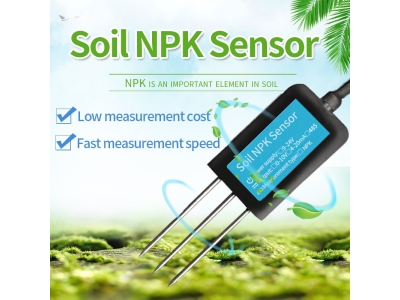Introduction:
The earth beneath our feet is a complex and intricate ecosystem, teeming with life and playing a crucial role in sustaining life on our planet. However, for a long time, understanding the intricacies of soil and its hidden ecosystem has been a challenge. That is where soil sensors come into play. In recent years, soil sensors have emerged as valuable tools that unlock the secrets of the earth's hidden ecosystem, providing valuable insights for agriculture, environmental monitoring, and land management. This article explores the importance of soil sensors, their applications, and the potential they hold in studying and preserving our soil ecosystems.
The Role of Soil Sensors:
Soil sensors are devices that measure various parameters within the soil, such as moisture content, temperature, pH levels, nutrient levels, and salinity. These sensors help scientists and farmers understand the soil's physical and chemical properties, as well as monitor the health and dynamics of the soil ecosystem. By collecting real-time data, soil sensors provide valuable information to optimize agricultural practices, conserve water resources, prevent soil degradation, and improve crop yields.

Applications of Soil Sensors:
a. Precision Agriculture: Soil sensors play a vital role in precision agriculture, where farmers can assess soil conditions at a highly localized level. By deploying sensors in fields, farmers can monitor soil moisture levels and nutrient availability in real-time, allowing precise irrigation and fertilization. This targeted approach reduces water usage, minimizes nutrient runoff, and optimizes crop growth while reducing the need for synthetic inputs.
b. Environmental Monitoring: Soil sensors contribute to environmental monitoring efforts by providing insights into soil health and quality. They help identify polluted areas, analyze soil composition, and detect changes in soil moisture levels caused by natural events or human activities. By understanding soil conditions, environmental scientists can assess the impact of pollutants, develop remediation strategies, and monitor the effectiveness of restoration efforts.
c. Land Management and Conservation: Soil sensors aid in effective land management and conservation practices. By monitoring soil moisture, sensors help determine optimal planting times, prevent over-irrigation, and avoid soil erosion. They also assist in assessing the impact of land use changes, such as deforestation or urbanization, on soil health and biodiversity. This information is critical for sustainable land management and preserving natural habitats.
d. Climate Change Research: Soil sensors contribute to climate change research by providing data on soil carbon content and greenhouse gas emissions. Changes in soil moisture and temperature can affect the release and storage of carbon dioxide and other greenhouse gases. By understanding these dynamics, scientists can improve climate models, assess the impact of climate change on soil ecosystems, and develop strategies for carbon sequestration.
e. Urban Planning and Infrastructure: Soil sensors have applications in urban planning and infrastructure development. By studying soil properties and moisture levels, engineers can design sustainable drainage systems, preventing flooding and improving stormwater management. Soil sensors also aid in green space planning, helping identify suitable areas for urban gardens, parks, and tree planting initiatives.
Advancements in Soil Sensor Technology: a. Wireless and IoT Connectivity: Recent advancements in soil sensor technology include wireless connectivity and Internet of Things (IoT) integration. Soil sensors can now transmit real-time data wirelessly, enabling remote monitoring and reducing the need for manual data collection. This connectivity allows farmers and scientists to access soil information at any time and make timely decisions regarding irrigation, fertilization, and pest control.
b. Miniaturization and Cost Reduction: Soil sensors have become smaller, more cost-effective, and easier to deploy. Miniaturization has enabled the development of sensors that can be embedded directly into the soil, allowing continuous monitoring without disturbing the natural soil environment. The reduced cost makes soil sensors more accessible to farmers, researchers, and environmental organizations, facilitating widespread adoption.
c. Multi-Parameter Sensing: Modern soil sensors can measure multiple parameters simultaneously, providing a comprehensive understanding of soil conditions. These sensors can measure moisture, temperature, pH levels, nutrient content, and salinity in one device. This multi-parameter sensing capability enhances the accuracy and efficiency of soil monitoring, reducing the need for multiple sensors and data collection processes.
d. Data Analytics and Machine Learning: With the increasing volume of data collected by soil sensors, data analytics and machine learning tech






